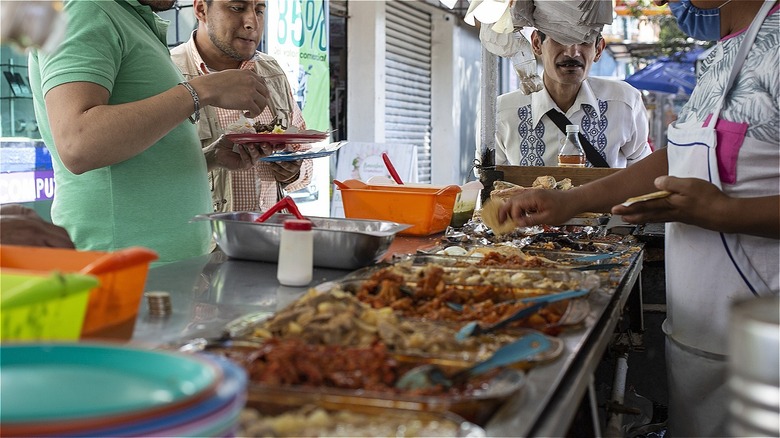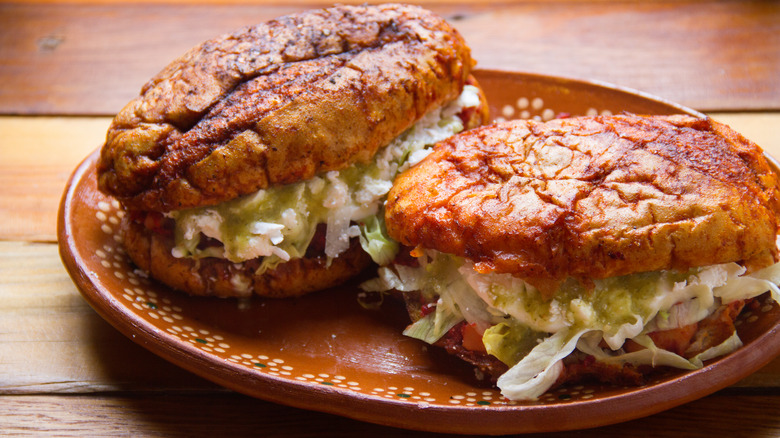The Bright Red Street Food Sandwich Inspired By A Mexican Volcano
Sandwiches are one of those glorious food creations for which your only limit is your imagination when it comes to dreaming up potential toppings and combinations. There are the classics you'll commonly encounter in American delis and sub shops such as the club sandwich stacked with turkey, ham, cheese, and veggies tucked between triangles of bread and the Italian loaded with salami, capicola, provolone, lettuce, tomato, and onions drizzled in oil and vinegar.
Nearly anywhere you travel internationally has its own version of a popular sandwich, like ham and cheese served on baguettes in France, or culinary cultural mash-ups that emerged from colonialism including the banh mi from Vietnam. In Mexico, there are tortas, a type of sandwich featuring a host of savory fillings.
One of Mexico's most popular tortas is known as the pambazo, a bright red street food sandwich that is believed to be inspired by a Mexican volcano. Its origins link it back to peasant food, but today it is cherished in Mexico as a favorite snack or appetizer.
A 'mountain' of a sandwich
A pambazo torta is generally constructed of potatoes, chorizo, lettuce, cheese, and cream, but much like other sandwiches around the globe, regional variations can be found throughout Mexico. The reddish tint of the bread in a pambazo derives from a soaking in guajillo peppers, which deliver a bit of a spicy kick.
In one version of the pambazo origin story, it is purported that while in Veracruz the chef of Mexican Emperor Maximilian (who reigned in the 1864-1867) and Carlota of Mexico developed the bread as a tribute to the volcano Pico de Orizaba, the highest mountain in Mexico. As with so many other origin stories the veracity of this one is unknown, but it's always fun to speculate.
The pambazo is, however, believed to have originated in Veracruz, with a name that is said to come from the words "pan basso," which was historically a bread consumed by the lower class. Due to the quality and consistency of the flour, the bread was typically dipped in red-hued guajillo sauce then fried to make it more palatable. In Veracruz, refried beans and cheese were the traditional fillings. As a poor man's dish, it was designed to be cheap and filling, though the pambazo is now enjoyed by all walks of life in Mexico as a street food staple.

